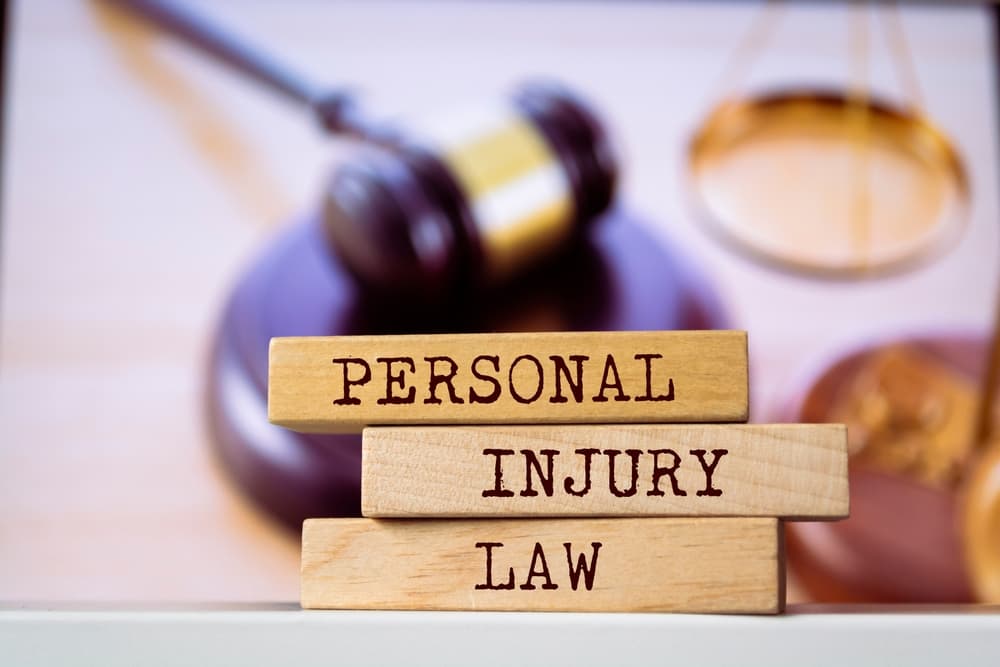Neck and back injuries from a car accident often linger long after the crash itself. When another driver causes the collision, you may be left with pain, medical bills, and time away from work. Many people ask, what is the average settlement for car accident neck and back injuries? The truth is that no two cases look the same. Settlement amounts depend on many different factors such as the type of injury, treatment, and how the injuries affect your daily life.
Anyone who suffered neck or back injuries in a Missouri crash caused by someone else deserves clear information about what to expect. Insurance companies often undervalue these claims, so strong legal representation can make a major difference in how your case turns out. A car accident attorney near you can review your situation in a free consultation and guide you through your next steps.
Key Takeaways About Car Accident Settlements
- Settlement amounts for neck and back injuries vary significantly based on multiple factors including injury severity, medical costs, and impact on daily life
- Missouri follows comparative fault rules, which can reduce your settlement if you’re partially at blame for the accident
- Proper medical documentation and treatment records are crucial for establishing the value of your claim
- Insurance companies often make low initial offers that don’t reflect the true value of neck and back injury cases
- Working with an experienced personal injury attorney can significantly impact the outcome of your settlement
- You should not finalize a settlement until you reach Maximum Medical Improvement (MMI), as your doctor will then have a clear understanding of your long-term prognosis and future medical needs
Understanding Neck and Back Injuries from Car Accidents
Neck and back injuries are among the most common results of car accidents, and they often linger long after the crash itself. The force of a collision places immense strain on the spine, muscles, and soft tissues. Even a low-speed impact can trigger significant pain, limit mobility, or require long-term medical treatment. Some injuries heal with time and proper care, but others lead to chronic pain or permanent changes in how a person lives and works.
Common Types of Neck Injuries
- Whiplash: This injury happens when your head jerks back and forth suddenly. Symptoms include stiffness, headaches, and dizziness.
- Herniated discs: The discs between your vertebrae may rupture or slip, causing sharp pain or numbness.
- Cervical fractures: Broken bones in the neck require immediate treatment and can lead to long-term mobility problems.
- Soft tissue injuries: Sprains and strains often don’t show up on X-rays but still cause significant discomfort.
Common Types of Back Injuries
- Lumbar sprains: Overstretching ligaments or muscles in the lower back can create lasting pain.
- Spinal fractures: Broken vertebrae can destabilize the spine and may require surgery.
- Herniated or bulging discs: Similar to neck injuries, discs in the lower back can press on nerves and limit movement.
- Spinal cord injuries: Among the most severe outcomes of car accidents, spinal cord trauma can result in partial or total loss of function below the injury site.
Neck and back injuries from car accidents vary widely in severity. However, they often share one trait: they disrupt everyday life in ways most people don’t expect. Some injuries heal with consistent treatment, while others require long-term care and adjustments. Recognizing the different types of injuries helps explain why settlement amounts differ so much from case to case.
Why These Injuries Are Often Undervalued by Insurance Companies
Insurance companies tend to downplay neck and back injuries because symptoms aren’t always visible right away. They may argue that soreness or stiffness will improve with time, ignoring the possibility of chronic pain or long-term treatment. Adjusters often push quick settlements before the full medical picture develops, which can leave injured people with less money than they need for ongoing care.
What Factors Determine Settlement Amounts for Neck and Back Injuries?
Several elements influence how much money a settlement provides. Each case is unique, but some consistent factors play a role.
Severity and Type of Injury
A mild sprain might resolve with physical therapy, while a spinal fracture could require surgery and months of recovery. Settlements increase when injuries involve permanent disability, chronic pain, or reduced mobility.
Medical Treatment Costs and Future Care Needs
Bills for emergency care, surgery, physical therapy, medications, and follow-up visits all contribute to the claim’s value. If doctors expect future treatment, those projected costs also factor into settlement calculations.
Lost Wages and Earning Capacity
Time away from work matters when calculating damages. If your injuries prevent you from returning to the same job or reduce your ability to earn in the future, settlement amounts typically rise.
Pain and Suffering Damages
This category accounts for the non-financial toll of injuries, such as chronic discomfort, sleep disruption, and daily inconvenience. Pain and suffering damages often form a large portion of settlements in neck and back injury cases.
Impact on Quality of Life
When injuries prevent you from enjoying hobbies, caring for family, or living independently, those lifestyle changes influence the overall value of your claim.
How Does Missouri Law Affect Your Car Accident Settlement?
Missouri law shapes the outcome of every car accident case. Knowing the rules helps explain why settlement amounts vary.
Missouri’s Comparative Fault System
Missouri follows a pure comparative fault system, established in the case Gustafson v. Benda. This rule means that even if you are partly responsible for the crash, you may still recover damages. A court would reduce your final compensation by your percentage of fault.
Statute of Limitations for Personal Injury Claims
You have five years from the accident date to file a personal injury claim in Missouri. Waiting too long may mean losing your chance to pursue any compensation.
Required Insurance Coverage in Missouri
The Missouri Department of Revenue requires drivers to carry liability insurance covering at least $25,000 per person and $50,000 per accident for bodily injury. These limits often fall short in serious neck and back injury cases, which is why attorneys investigate other potential coverage sources.
No-Fault vs. At-Fault Insurance Rules
Missouri is an at-fault state, meaning the driver who caused the accident (and their insurance company) pays for damages. This system allows injured people to pursue full claims rather than relying only on their own insurance.
What Documentation Do You Need to Maximize Your Settlement?
Strong evidence supports higher settlement amounts. Thorough documentation proves the seriousness of your injuries and their effect on your life.
Medical Records and Treatment History
Detailed records of emergency care, doctor visits, imaging tests, and prescribed treatments show the scope of your injuries. Gaps in treatment may give insurers an excuse to argue your injuries weren’t serious.
Employment Records and Wage Documentation
Pay stubs, tax returns, and employer statements help establish how much income you lost while recovering. They also highlight reduced earning potential if you can’t return to your previous job.
Expert Medical Testimony
Doctors and specialists may explain how your injuries developed, what treatments are needed, and whether you’ll face long-term limitations. This testimony strengthens your case when insurance companies dispute the severity of your condition.
Evidence of Pain and Suffering
Statements from family, friends, or coworkers can show how the injuries disrupted your daily life. For example, a coworker might testify that you can no longer lift heavy objects, or a friend might explain how pain prevents you from enjoying activities you once did.
How Long Does It Take to Settle a Neck and Back Injury Case?
Settlement timelines depend on many factors. Some cases resolve quickly, while others take months or years.
Factors That Affect Settlement Timeline
The severity of the injury, cooperation of the insurance company, and clarity of fault all impact how long a case takes. Complex medical issues or disputed liability often extend the process.
The Importance of Reaching Maximum Medical Improvement
Doctors often advise waiting until you reach maximum medical improvement (MMI) before finalizing a car accident settlement. MMI means your condition has stabilized, and doctors have a clearer picture of future medical needs. Settling before MMI may leave you with uncovered costs later.
Negotiation Process with Insurance Companies
Insurance adjusters often start with low offers, hoping you’ll accept quickly. Your attorney presents evidence, counters these offers, and pushes for a figure that reflects the true scope of your losses.
When Cases Go to Trial
Sometimes, insurance companies refuse to make a fair offer. In those cases, your attorney may file a lawsuit and prepare for trial. Many cases still settle before reaching court, but preparing for trial increases pressure on insurers to raise their offers
What Mistakes Should You Avoid When Dealing with Insurance Companies?
Insurance companies look for ways to reduce payouts. Avoiding common mistakes protects the strength of your claim.
Accepting the First Settlement Offer
The first settlement offer almost never reflects the true value of your case. Accepting too soon can leave you with unpaid medical bills or lost income.
Providing Recorded Statements Without Legal Representation
Adjusters often ask for recorded statements. They may twist your words to downplay your injuries or shift blame. Always consult an attorney before giving a recorded statement.
Signing Medical Releases Too Broadly
Insurance companies sometimes request access to all your medical records, not just those related to the accident. Broad releases let them search for unrelated conditions to blame for your current pain.
Minimizing Your Injuries or Pain
Downplaying your symptoms to adjusters or doctors weakens your case. Be honest and detailed about how the accident affects you, even if it feels uncomfortable.
How Our Attorneys Can Help
Our attorneys at Cook, Barkett, Ponder & Wolz provide critical support in car accident cases. We handle the details while you focus on recovery.
Comprehensive Case Evaluation
Our attorneys review police reports, medical records, and insurance policies to build a clear picture of your case.
Medical Expert Network and Resources
We identify and retain qualified medical professionals who can provide clear testimony about your injuries, treatment, and future care needs to establish the full value of your claim.
Skilled Negotiation with Insurance Companies
Our lawyers understand insurer tactics and know how to respond effectively. Their involvement often leads to higher settlement offers.
Trial Experience When Settlement Isn’t Adequate
If the insurance company refuses to pay fairly, an attorney from our firm can prepare your case for court. This shows the insurer you’re serious and increases pressure to settle.
Contingency Fee Representation
Our personal injury attorneys work on contingency fees. This means you don’t pay upfront. The attorney’s fee comes from a portion of the settlement or verdict.
Frequently Asked Questions About Car Accident Settlements
Can I still receive compensation if I was partially at fault for the accident?
Yes. Missouri’s comparative fault rule allows recovery even if you share responsibility. Your settlement simply decreases by your percentage of fault.
What if my neck or back pain didn’t appear immediately after the accident?
Delayed pain is common in neck and back injuries. You should still seek medical attention and document the connection to the accident.
How do pre-existing conditions affect my settlement amount?
Insurers may argue that pre-existing conditions caused your pain. However, if the accident worsened your condition, you can still recover damages for that aggravation.
Should I accept a settlement if I’m still receiving treatment?
Usually no. Settling too early may leave future medical costs uncovered. Waiting until doctors understand your long-term prognosis is often better.
What happens if the at-fault driver doesn’t have enough insurance coverage?
Your attorney may explore other sources, such as your own uninsured or underinsured motorist coverage. In some cases, you may also pursue claims against other responsible parties.
How do you calculate pain and suffering in a Missouri car accident claim?
In Missouri, there is no single formula for calculating pain and suffering.
Attorneys and insurance companies often use methods like the “multiplier” approach, where they multiply the total economic damages (medical bills and lost wages) by a number based on the severity of the injury.
Another method involves assigning a per diem, or daily rate, for the pain experienced from the accident until the victim reaches maximum medical improvement.
Ultimately, the amount depends on the injury’s severity, the length of recovery, and the impact on your daily life.
What is the settlement difference between a whiplash injury and a herniated disc requiring surgery?
A settlement for a herniated disc requiring surgery is substantially higher than one for a whiplash or soft tissue injury. Whiplash claims primarily involve costs for physical therapy, chiropractic care, and medication, along with associated pain and suffering.
A herniated disc that requires surgery involves much higher medical expenses, including costs for the surgeon, anesthesiologist, hospital stay, and extensive post-operative rehabilitation. It also leads to more significant lost wages and a greater award for pain and suffering due to the invasive nature of the treatment and longer, more difficult recovery.
What happens if my medical bills exceed the at-fault driver’s insurance policy limits?
If your medical expenses and other damages exceed the at-fault driver’s bodily injury liability limits, you have a few options. Your attorney can investigate whether you have underinsured motorist (UIM) coverage on your own auto insurance policy, which is designed to cover this exact gap.
We can also investigate whether the at-fault driver has personal assets that could satisfy a judgment. In cases involving commercial vehicles or drivers working for a company, you may pursue additional insurance policies.
Contact Our Personal Injury Attorneys in Missouri Now

Car Accident Attorney, Phillip J. Barkett
Neck and back injuries can leave you with medical bills, missed work, and pain that lingers for years. Missouri law limits how long you have to act, so reaching out quickly protects your rights.
Cook, Barkett, Ponder & Wolz has decades of experience representing injured Missourians. Our team understands how insurance companies work and how to hold them accountable. Every case receives careful attention, whether it settles outside court or proceeds to trial.
You don’t need to carry the burden of a car accident claim alone. Contact our Missouri personal injury attorneys today for a free, no-obligation consultation and learn how we can help you pursue a fair settlement for your neck and back injuries.





